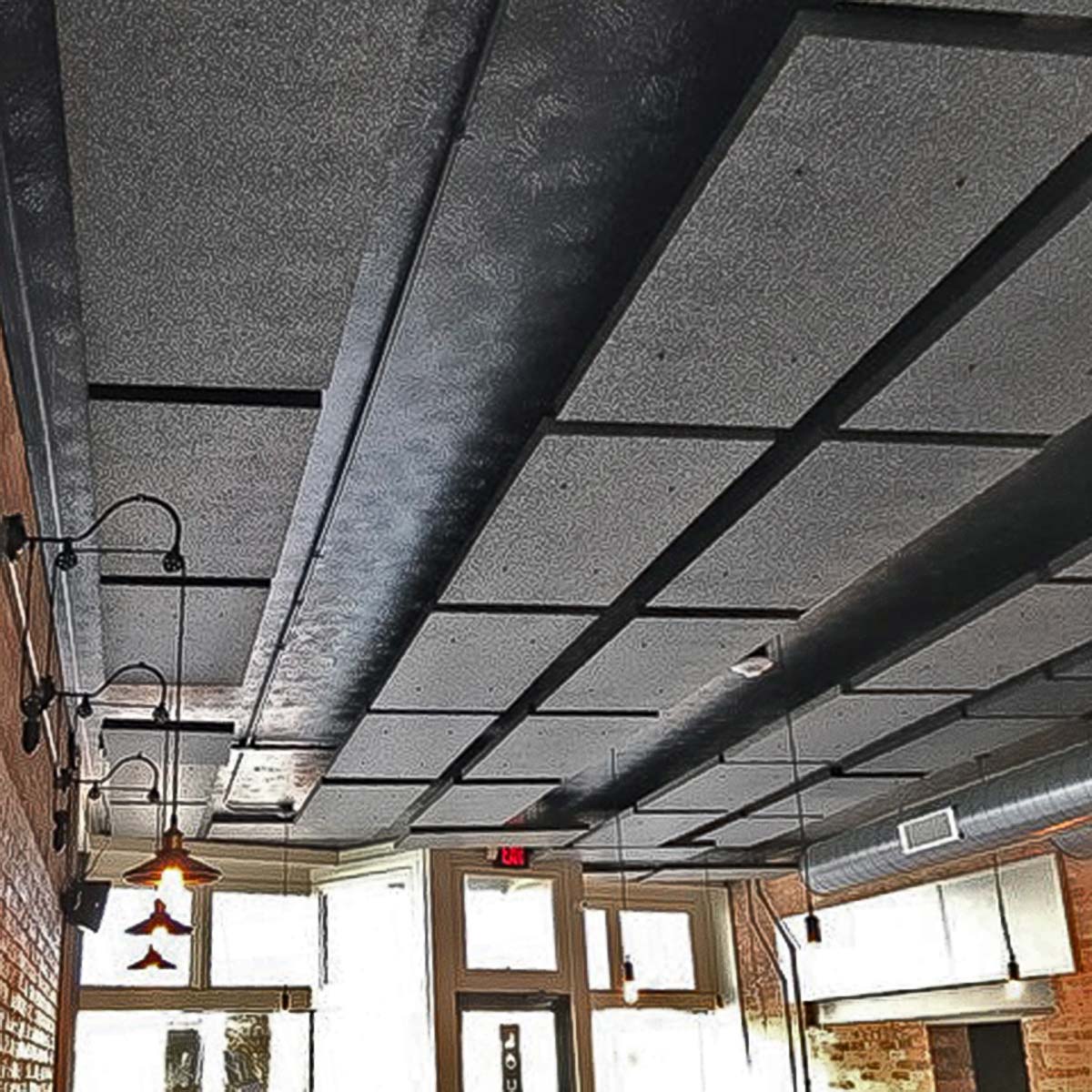Creating Consistency: Acoustic Solutions for a Balanced Atmosphere
Creating Consistency: Acoustic Solutions for a Balanced Atmosphere
Blog Article
Attain Perfect Harmony in your house With Effective Soundproofing Techniques for Ideal Acoustics
Soundproofing plays an important role in achieving optimal acoustics, influencing the means we experience and communicate with our living rooms. By recognizing the principles of soundproofing, determining sources of sound disturbances, picking ideal products, and applying tried and tested methods, you can transform your home into a sanctuary of tranquility where audio enhances rather than disrupts.

Comprehending Soundproofing Fundamentals
What are the fundamental principles that underlie effective soundproofing techniques? Soundproofing is rooted in the understanding of exactly how acoustic waves travel and communicate with different products. The trick to effective soundproofing depends on interrupting or absorbing these acoustic waves to lessen their transmission from one area to one more. This can be achieved with various approaches, such as including mass to walls, floors, and ceilings, securing spaces and fractures to avoid audio leak, and making use of sound-absorbing materials like acoustic panels or carpets (acoustic solutions).
Comprehending the concept of sound transmission course (STC) ratings is vital in selecting the ideal products for soundproofing. The STC rating gauges how well a product can decrease air-borne audio transmission via it, with greater STC rankings suggesting far better soundproofing capacities. Furthermore, taking into consideration the impact of impact insulation class (IIC) scores for lowering influence noise, such as steps or furniture moving, can further improve the efficiency of soundproofing options.
Examining Sound Resources in your house
Building upon the fundamental understanding of soundproofing concepts, a critical action in effective noise reduction within your home involves identifying and assessing the numerous resources of undesirable sound. Noise resources can be classified into 2 primary types: air-borne noise, which consists of seem like conversations, songs, and television, and influence noise, such as footsteps or things being dropped. To evaluate these resources, think about the different spaces in your home and the tasks that usually occur in each. The living room might have more air-borne sound from home entertainment systems, while effect sound from footsteps may be a problem in locations with tough floor covering like corridors or cooking areas.
In addition, take into consideration outside sources of sound, such as traffic, neighbors, or neighboring building and construction, which can likewise impact the acoustics within your home. acoustic solutions. Identifying these resources will help you focus on locations for soundproofing and select one of the most effective solutions. By determining the certain noise sources in your house, you can tailor your soundproofing efforts to accomplish ideal outcomes and produce a much more serene and unified living setting
Selecting the Right Soundproofing Materials
When selecting soundproofing products for your home, it is important to prioritize efficiency and compatibility with your specific sound problems. Think about variables such as the kind of noise you are attempting to block, the degree of soundproofing required, and the visual appeals of the products to guarantee they mix effortlessly into your living space.
One typical material for soundproofing is acoustic foam. This light-weight and versatile product is terrific for soaking up mid to high-frequency audios, making it perfect for songs rooms, home cinemas, or offices. One more option is mass-loaded plastic, which works in blocking out low-frequency noises like traffic or machinery audios. For walls and ceilings, soundproof drywall is a preferred option as a result of its ability to minimize sound transmission between spaces.
Drapes and rugs made from sound-absorbing products are additionally reliable in dampening noise, specifically in locations with difficult surfaces that create audio to jump about. Remember, the key to successful soundproofing is choosing the ideal materials that address your particular noise issues while enhancing the overall comfort and acoustics of your home.
Executing Soundproofing Methods
To click to read successfully carry out soundproofing methods in your home, it is vital to start by evaluating the areas that are most susceptible to noise infiltration. Usual sources of sound can include external sounds from website traffic, next-door neighbors, or close-by construction, as well as inner sources like appliances, pipes, and amusement systems. When you have recognized these areas, you can start executing soundproofing remedies tailored to every particular room.

For even more significant noise decrease, think about installing soundproof drywall, double-glazed home windows, or durable networks to isolate vibrations. Furthermore, repositioning furniture, including shelfs, or incorporating sound-absorbing materials can better improve the acoustics of an area. By strategically carrying out these soundproofing techniques, you can produce a quieter and even more tranquil living atmosphere in your house.
Keeping and Improving Acoustic Environment
After executing soundproofing methods to check my reference resolve sound infiltration in your home, the focus shifts towards preserving and improving the acoustic atmosphere to make certain a consistently serene living room. To preserve optimum acoustics, frequently examine soundproofing products for wear and tear, ensuring they remain reliable in obstructing unwanted noise. Keep windows and doors properly sealed to avoid audio leakage and think about including weather condition stripping or door moves for added soundproofing.
Improving the acoustic environment can entail strategic placement of furnishings, rugs, and curtains to dampen sound reflections and mirrors. Making use of sound-absorbing products such as acoustic panels or foam can additionally enhance the general audio quality in your home. acoustic solutions. Additionally, including soft furnishings like cushions and blankets can aid decrease sound reverberation, creating an extra pleasurable auditory experience
In addition, purchasing sound-absorbing decor elements like shelfs, tapestries, or plants can contribute to a well balanced acoustic environment. Regularly decluttering your area can additionally avoid acoustic waves from jumping off surfaces, eventually improving the total acoustics of your home. By regularly preserving and boosting your acoustic environment, find out here you can produce an unified and serene space for yourself and your family members.
Final Thought
In verdict, accomplishing ideal consistency in your home through effective soundproofing strategies is important for ideal acoustics. By understanding soundproofing essentials, evaluating sound resources, picking the right products, executing methods, and maintaining the acoustic setting, you can develop a peaceful and enjoyable living area devoid of unwanted noise disturbances. Prioritizing soundproofing efforts can significantly enhance the total high quality of life in your home.
Report this page